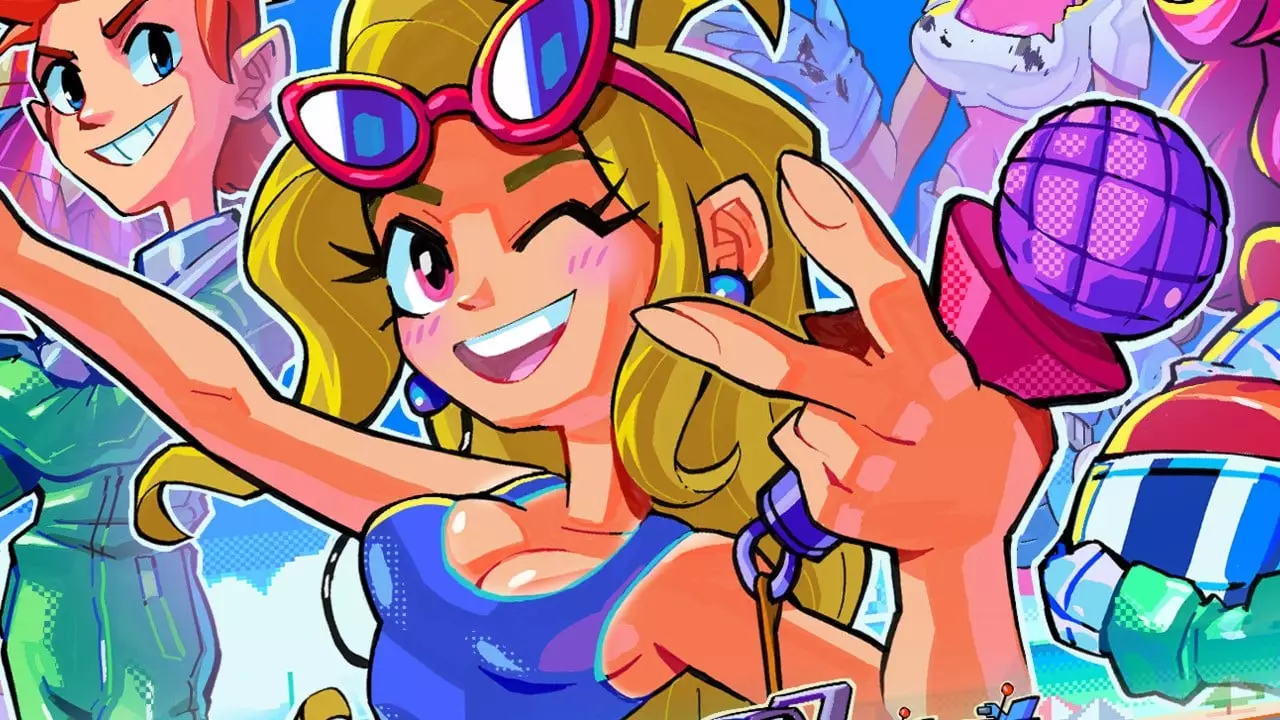The arrival of *Victory Heat Rally* on Kickstarter in 2020 sparked excitement among retro gaming enthusiasts. The game, which aimed to pay tribute to Sega’s iconic Super Scaler arcade titles from the 1980s, has undergone significant evolution since its crowdfunded inception. Fast forward to its release on the Nintendo Switch, and a nagging sense of divergence presents itself. What was initially envisioned as a thrilling ride through rollercoaster-like tracks reminiscent of Sega’s *Power Drift* has transformed into a more standard 3D racing experience, albeit with a stylized cel-shaded aesthetic.
This shift in thematic representation raises questions about the authenticity of the tribute that the developers set out to create. While the contemporary visuals of *Victory Heat Rally* are both delightful and nostalgic, the question looms: has the core essence of the intended gameplay been diluted? The vibrant graphics evoke the charm of yesteryear, yet they showcase a façade that ultimately conceals the reality of a fundamental polygonal racing game. This contrast highlights the delicate balance between honoring a legacy while pushing the boundaries of modern design.
At the heart of *Victory Heat Rally* lies a drifting mechanic that promises exhilaration. Players who can master the timing of their drifts can unleash speed boosts, providing a superficial layer of excitement. While this singular mechanic is accessible for new players and may even inspire moments of adrenaline, it brings forth the question of depth. The ease of learning this technique leads to rapid mastery, and the gameplay soon risks falling into repetition.
The Championship mode, which spans a modest 5-6 hours, offers a mix of rally races, lap-based challenges, and various tasks such as cone knocking. Yet, despite its attempts to inject variety, the gameplay ultimately begins to feel monotonous—an unfortunate consequence of leaning too heavily on a simplistic mechanic. Players may find themselves engaged initially but can quickly tire of the same routines. The beautiful visuals may distract, but they cannot substitute for substantive gameplay elements that promote longevity.
Multiplayer Experience: Fun but Fleeting
The inclusion of multiplayer functionality, allowing up to four players to compete in split-screen mode, adds a layer of social enjoyment to *Victory Heat Rally*. The cel-shaded aesthetics, while serving as a visual homage, also fortuitously enhance multiplayer experiences by maintaining clarity, even in a smaller viewing space. However, despite the initial excitement of head-to-head competition, the gameplay’s repetitive nature detracts from its potential to foster ongoing engagement.
While racing games thrive on multiplayer dynamics—the thrill of competition, the joy of sharing victories, or commiserating losses with friends—the excitement seems to wane swiftly after several rounds. Unlike some competitors in the genre that compel players to return again and again, *Victory Heat Rally* lacks that magnetic draw. While it’s fun in the moment, it’s not the type of game that haunts your thoughts, compelling you to revisit it time after time.
In an era where indie racing games proliferate on platforms like the Switch, distinguishing oneself becomes paramount. *Victory Heat Rally*, while achieving an attractive visual style and easy accessibility, struggles to carve out a unique identity. The decision to drift away from the striking Super Scaler art style—though it may not directly affect gameplay—symbolically represents a loss of the essence that could have set it apart from competitors.
As players choose their racing titles, many alternatives exist, each with distinctive art styles and gameplay features that promise excitement. *Victory Heat Rally,* while fine in execution and earnest in its appeal, may fall through the cracks of this chaos. This lack of a unique selling point renders it overshadowed by an array of modern contenders, each vying for their moment in the players’ minds.
*Victory Heat Rally* stands as a commendable effort that successfully captures the aesthetic whimsy of retro gaming. However, its limitations in gameplay depth and originality prevent it from securing a memorable place within the competitive landscape of racing titles. Players will likely enjoy their time with the game, but this enjoyment is as fleeting as its homage to Sega’s legacy. Ultimately, while it’s not an outright failure, it does fall short of becoming the exhilarating joyride initially promised.

